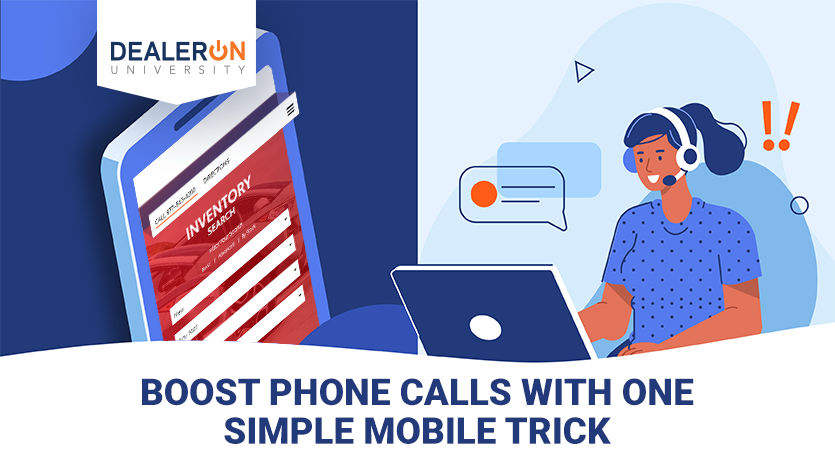

Today’s blog will help supercharge your mobile site’s lead-gathering potential with a single small addition.
Ever leave the grocery store with something you didn’t intend to buy? Maybe you ignored hundreds of years of wisdom and went shopping while hungry and now you’re carting home a family-sized bag of Mac and cheese (whether it was intended for a family or the size of a family is open for debate). Or maybe you walked in to pick up bread and milk and once you arrived at checkout you thought a candy bar or a pack of gum sounded good.
It doesn’t matter if you just forgot that you needed that item, or if the act of seeing the product spurred the decision to buy. The effect is the same. While there’s an undeniable difference between some Juicy Fruit and a new car, the basic principles are identical. The goal is to get the customer to buy.
Human beings are amazing, but we’re also pretty lazy when you get right down to it. The average U.S. consumer spends $5,400 on spontaneous purchases annually. Some of this can be chalked up to hunger, but some of it is that all the roadblocks have been removed. It’s the easiest thing in the world to pick up that Snickers bar and throw it onto the conveyor belt.
You’re probably thinking that throwing a bunch of cars at the end of the checkout isn’t going to do anything other than clutter the place up. You’re right. But this isn’t a situation when someone walks into your store looking for potatoes and you trick them into driving out in an F150. This is a situation where someone is already looking for cars. All you have to do is remove every possible impediment to them getting one.
A sticky navbar, especially on mobile, is a great way to keep the emphasis where you want it: engaging with your customers. For those who might not be aware, a “sticky navbar” isn’t one of those candy bars you can impulse buy at the market. It’s a menu bar that stays at the top of a website no matter how far down the page you swipe or scroll. It’s a seemingly small piece of your website’s overall user experience that is often times overlooked, which is shame, because it is incredibly important.
It’s very easy to get lost on a website scrolling for days, this is especially true of e-commerce websites, or e-commerce adjacent websites like yours, that have miles and miles of scrolling products. By having a sticky navbar you can ensure that no matter how far down the page your customers are they are able to fully navigate your site at all times This is even more important in today’s world where the top two actions that users make from their mobile device are tapping to initiate a phone call and getting directions to your dealership. When your customer is ready to call your dealership, or to make their way to their store, you want nothing in their way.
Unfortunately, all too often websites don’t use a sticky navbar, which means as your users scroll down the page the menu vanishes leaving the user to press the back button or scroll all the way back to the top of your website to get to those all too important navigation elements.
There’s a reason they don’t stock the gum and candy bars in the dairy section at the grocery store when you are knee deep in your list of needed items. Instead they’re placed RIGHT at the register when you are ready to make a decision. Not having a sticky navbar that contains easy to find elements at the time when your users are ready to make that same decision could not only be frustrating your users, but also costing you money.


